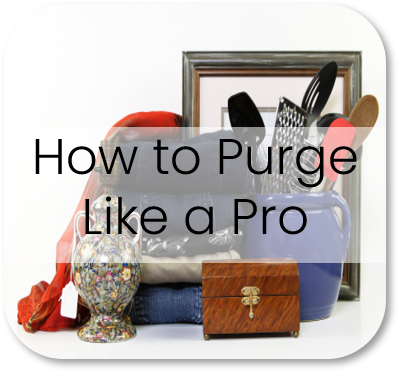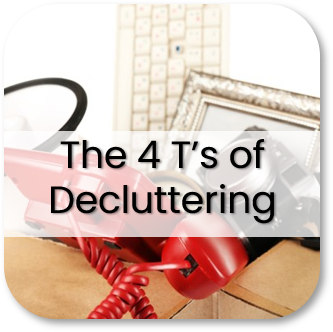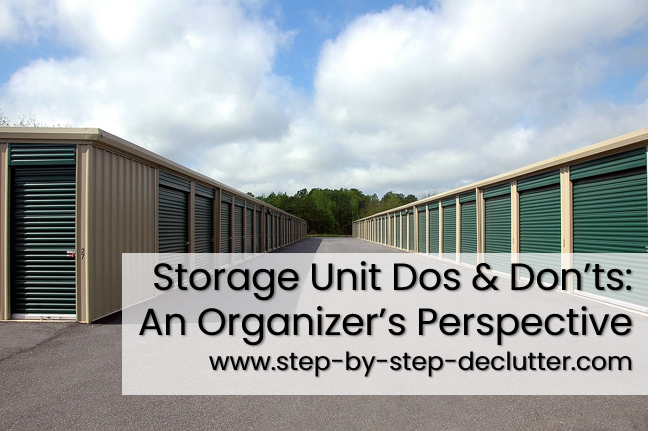|
|
Storage Unit Dos & Don'ts: An Organizer's Perspective |
|
The self-storage industry is currently experiencing a massive boom. The size of self-storage space completed in the United States more than tripled between 2015 and 2018, and it continues to increase. Vacancy rates have remained constant at around 10% indicating that the demand is rising in proportion to the increasing supply. You may be surprised to learn that the number of self-storage units in the United States exceeds the number of Starbucks and McDonald's locations combined! In addition, the industry's annual revenue was almost twice that of the Global Music Industry last year ($39 billion vs. $20.2 billion).
Approximately 9% of households in the United States rent a self-storage unit. Of those, 67% are single-family homes, most of which have a garage. Thirty-three percent have a basement as well. More than half of those who rent a self-storage unit do so long-term (more than a year), and 25% keep their unit for three years or more.
As an organizer, I find these statistics troubling. It seems there is a growing trend among American households to expand rather than declutter. This approach adds to the physical, mental, and financial burden of clutter, rather than reducing it.
Approximately 9% of households in the United States rent a self-storage unit. Of those, 67% are single-family homes, most of which have a garage. Thirty-three percent have a basement as well. More than half of those who rent a self-storage unit do so long-term (more than a year), and 25% keep their unit for three years or more.
As an organizer, I find these statistics troubling. It seems there is a growing trend among American households to expand rather than declutter. This approach adds to the physical, mental, and financial burden of clutter, rather than reducing it.
Before You Store |
|
If you are seriously contemplating renting a storage unit to contain your excess clutter, please consider the following:
- The average monthly rental cost for a 10' x 10' unit is just under $100. In some parts of the country, the cost is significantly higher. Is what your storing worth a minimum of $1200 a year to maintain?
- You are likely to forget much of what you have in storage after a few months. If the items you're storing are potentially forgettable, why pay money to store them?
- Once your items are in storage, they become infinitely more difficult to access. You have to drive to the unit during the hours of operation and rifle through its contents anytime you need something. Do you really want to deal with that hassle?
- You assume a degree of risk of damage or theft when you place your things in a rented storage space.
- If you've ever seen the TV series Storage Wars, you know that storage facilities regularly auction off the contents of "abandoned" storage units, meaning units for which payment has not been made for a specified period of time. Chances are, if you're missing payments on your unit it's because something has happened to prevent you from making them. If you are ill, you might not have the ability to reclaim your things before they are seized. Or worse, if you die, your family might not know about the unit or where it's located. When you place your things in storage, you give up a measure of control.
- Long-term storage is a waste of money. If you're storing something you feel has value in order to pass it on to your children or others at some point, the question automatically becomes, "Is the item worth more than the cost to store it for x number of months (or years)?"
Storage Unit Dos |
|
There are a number of legitimate reasons why a person might require the temporary use of a storage facility. They typically involve transition of some sort. If, however, you feel that you must rent a storage unit in order to free up space, here are a few guidelines for protecting your items in storage:
- DO consider the arrangement temporary. Dumping stuff in a metal box and forgetting about it is not the way to deal with clutter. Set a time limit on the storage and make a long-term plan for your stuff.
- DO assess the security features of your facility before committing Is it well lit at night? Is there an employee on the premises? Are there surveillance cameras? Is the perimeter of the facility fenced?
- DO bring a heavy duty lock for the door of your unit. If your lock has a key, be sure to label it and keep it in a safe place. If it has a combination, be sure to write it down. Keep the combination in your wallet so you'll always have it with you when you need it.
- DO provide a moisture barrier. Cardboard boxes and furniture should not sit directly on the cement floor of the unit. Purchase plastic sheeting or a heavy-duty tarp to lay down on the ground before placing items inside the unit. If you can obtain wooden pallets, set them on top of the moisture barrier and stack items on them.
- DO use metal shelving if you have it. Storing items on metal shelving within your unit is ideal. In addition to keeping things off the ground, it reduces the amount of weight on any given box and allows for better air flow within the unit. It also makes retrieving items easier.
- DO keep an inventory of the items you're placing in storage. Ideally your inventory should include not only a list of the items you're storing, but also an approximation of where each item is located within the unit. This will allow you to find what you need easily once the unit is packed. Keep a copy of the inventory in a plastic bag or page protector inside the storage unit (at the front) and another copy at home for reference.
- DO label things carefully. I recommend labeling one end and one side of each box so that the label can be seen from either angle, depending on how the box is oriented in the unit. Be specific in your labels. Instead of "kitchen", list the types of kitchen items the box contains such as dishes, small appliances, table linens, etc.
- DO plan for accessibility. Place those things you expect to access most frequently at the front on the unit and the things you are least likely to need at the back. Also leave enough space between items to maneuver within the unit.
- DO pack your unit carefully. Place heavier items on the bottom and lighter items on the top. Avoid placing anything on top of furniture that could potentially damage it in some way (stains, dents, rips, etc.).
- DO clean items before you store them. Wash all fabrics, clean appliances, polish furniture to help prevent drying out. Vacuum upholstery and cover with a clean white sheet or moving blanket.
- DO insure the contents of your storage unit. If it's important enough to store (and hopefully it is!), then it's worth insuring it.
Storage Unit Don'ts |
|
Your storage facility will provide you with a list of prohibited items and other rules associated with the use of your unit. The don'ts identified here deal mainly (though not entirely) with mistakes to avoid when it comes to packing your items both in boxes and within the unit itself.
- DON'T think of this as a long-term solution. I can't really stress this point enough. There is no scenario involving off site long-term paid storage in which you win. It is always best to find a good home for the items you don't need and functional organization for the ones you do.
- DON'T store valuables. As noted above, there is too great a risk of damage or theft.
- DON'T wrap furniture (or anything) in plastic. It can trap moisture and cause mold or mildew.
- DON'T leave empty space in the tops of boxes. Always fill in open spaces with packing paper, socks, rags, or other (clean!) linens. Boxes with open spaces will gradually collapse under the weight of anything placed on top of them.
- DON'T overfill your unit. Air flow is important for preventing mold and mildew. In addition, overfilling your unit will make accessing the contents extremely difficult.
- DON'T store delicate or temperature sensitive items in an outdoor unit. See this list of 17 Items That Require Temperature Controlled Storage.
- DON'T pack hazardous or flammable materials. Your contract will outline the types of items that are prohibited.
- DON'T pack perishable items. This includes food and plants (and animals!). This may seem like a no-brainer, but I know someone who rented a unit to house her "food storage". This is against regulations for a reason. If your unit is found to be attracting vermin, you will be evicted.
- DON'T store smelly stuff. The odor will penetrate surrounding items and could attract pests. This includes paints (which are hazardous materials), candles, potpourri, and any sort of scented product (lotions, creams, etc.).
Instead of Long-term Storage, Think Long-term Solution |
|
While storage facilities are quite convenient and helpful during times of transition, they should never be used as a decluttering solution. Moving items to storage is not decluttering; it's transferring clutter. It doesn't solve the problem. In fact, it's likely to create additional problems. If you're tempted to box things up and move them to a storage facility in order to reclaim space in your home, resist the urge. Instead, use the time you would have spent packing. loading, and unloading your stuff at a new location to sort through things and get rid of that which you no longer need. Not only will it save you money, it will buy you peace of mind (and some much needed space).
Proudly powered by Weebly



